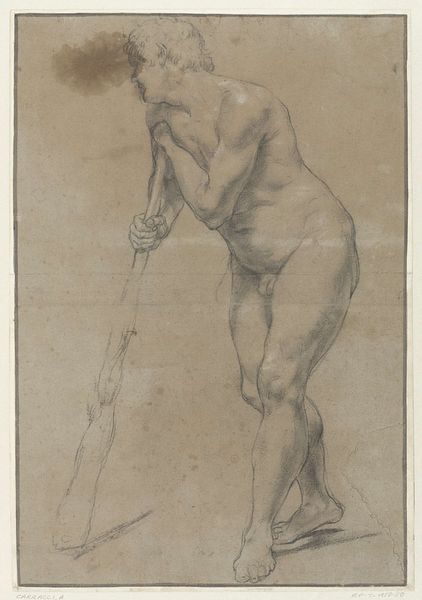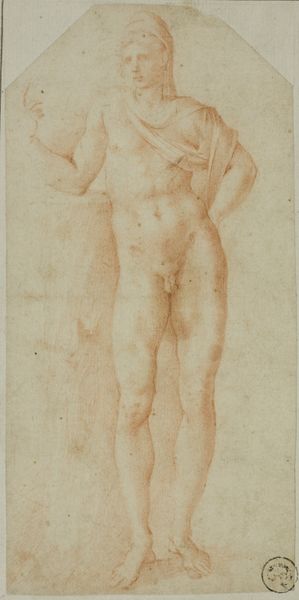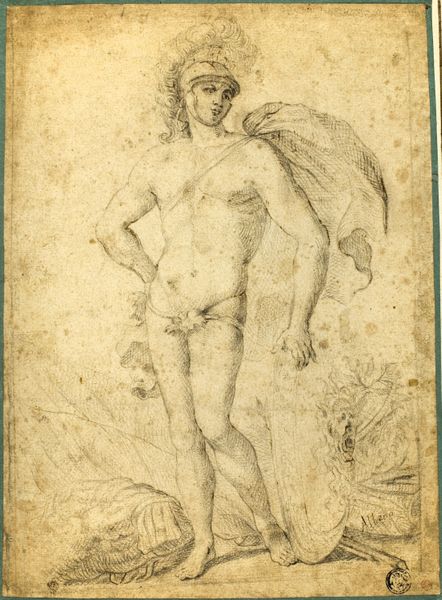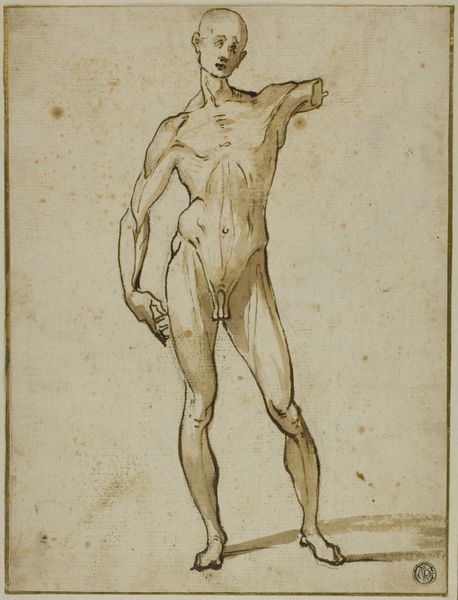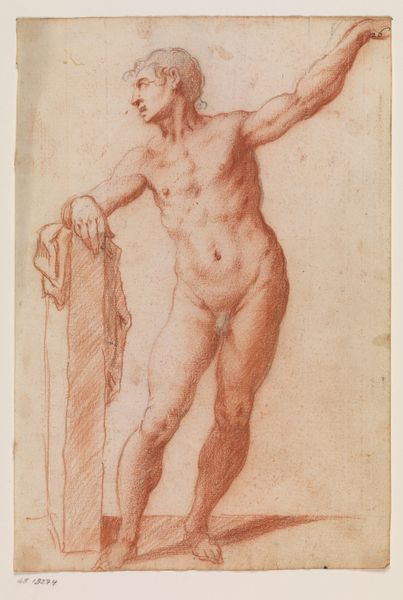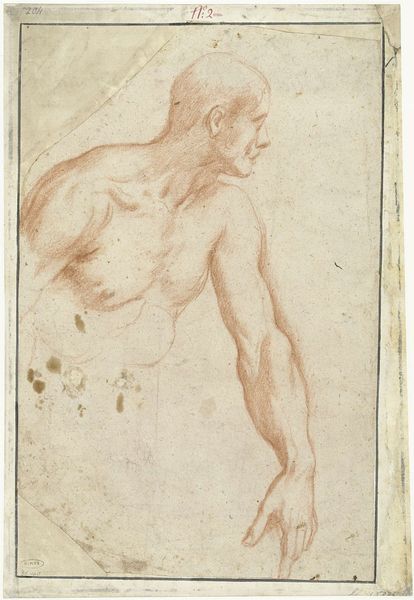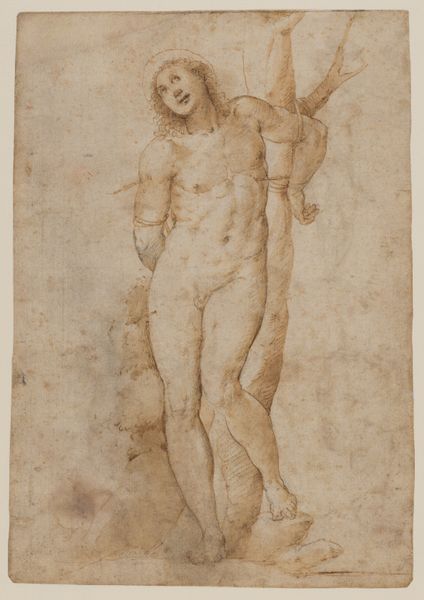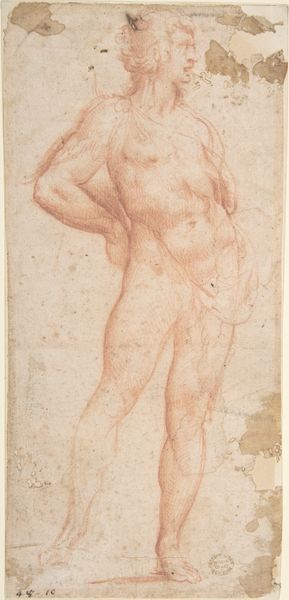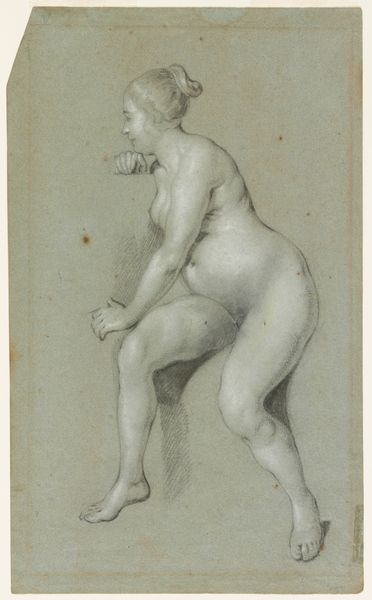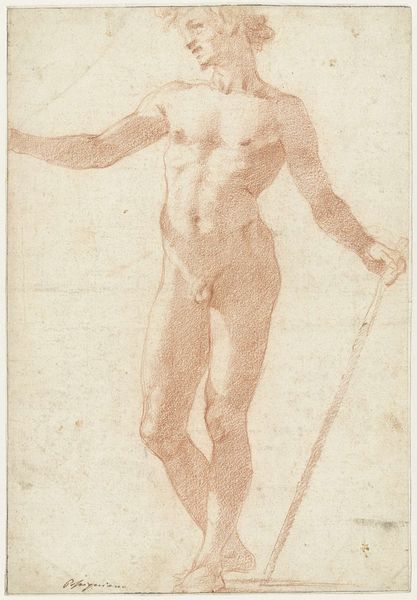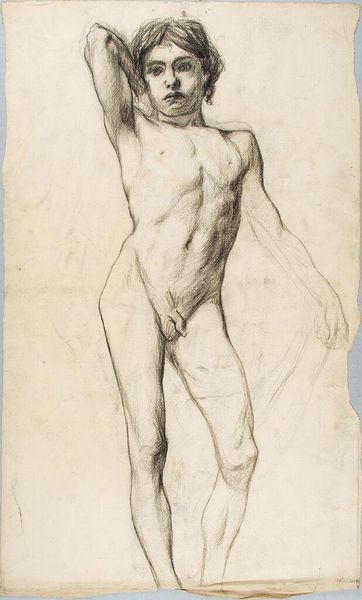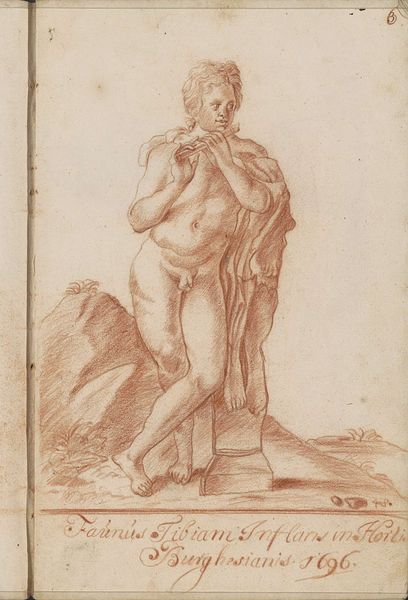
drawing, paper, pencil
#
portrait
#
drawing
#
pencil sketch
#
figuration
#
paper
#
form
#
11_renaissance
#
pencil
#
line
#
northern-renaissance
#
nude
Dimensions: height 197 mm, width 137 mm
Copyright: Rijks Museum: Open Domain
Gerard ter Borch sketched this Adam holding the apple. Adam, the first man, is a profound symbol in Western culture, embodying innocence, temptation, and the fall from grace. Here, Adam's hand placed over his chest may express an acknowledgement of his guilt. Consider earlier depictions of the Creation, such as Michelangelo’s Adam in the Sistine Chapel. There, Adam is a figure of potential and divine connection. However, in Ter Borch's rendition, the apple—a symbol of forbidden knowledge—leads us to reflect on the loss of innocence. This archetype of the human condition appears across cultures, illustrating the constant tension between our desires and our conscience. This symbol taps into our collective memory, a subconscious recognition of humanity's ongoing struggle with morality and choice. It is a symbol that resurfaces, evolving yet retaining its powerful emotional resonance across time.
Comments
No comments
Be the first to comment and join the conversation on the ultimate creative platform.
